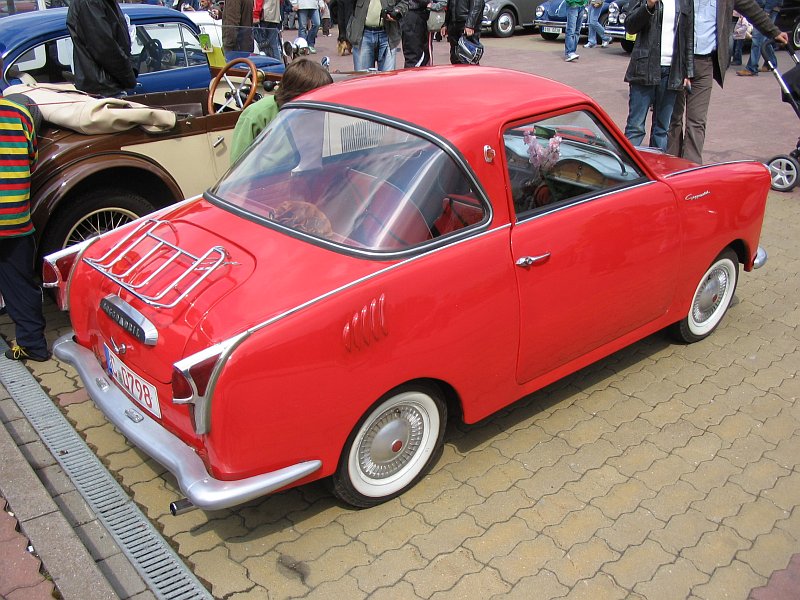Description
The Glas Goggomobil TS 250 Coupé was a charming microcar introduced in 1957 by Hans Glas GmbH of Dingolfing, Germany, as part of the company’s Goggomobil range. While Glas had already achieved success with its bubble-car-style Goggomobil sedans and vans, the TS series was aimed at drivers who wanted something sportier, more stylish, and aspirational, even if it was still powered by a very small engine. The result was one of the most distinctive microcars of the late 1950s, combining Italian-inspired design flair with German engineering practicality.
The exterior of the TS 250 Coupé was designed to look like a scaled-down sports car. With its rounded nose, oval headlamps, sweeping wings, and gently sloping roofline, it carried an elegance that belied its tiny size. The compact proportions gave it undeniable charm, while details such as chrome bumpers, delicate trim, and two-door coupé styling made it feel more upscale than the utilitarian Goggomobil sedans. Many observers compared its styling to larger contemporary European sports cars, and for many buyers, it was an affordable way to enjoy the look of a coupé without the high running costs.
Inside, the TS 250 Coupé was simple but cheerful. Seating was provided for two adults, with just enough space in the rear for a small parcel shelf or luggage. The dashboard was minimalist, typically featuring just a speedometer and a few switches, though higher-trim versions offered more instrumentation. Despite its modest appointments, Glas paid attention to detail, offering two-tone interiors and a more stylish presentation than the basic sedans.
Mechanically, the TS 250 lived up to its microcar origins. Power came from a 245 cc air-cooled two-cylinder, two-stroke engine producing about 13.6 horsepower, paired with a four-speed manual gearbox. While performance was modest—with top speeds of around 90 km/h (56 mph)—the lightweight fiberglass-reinforced body and nimble handling made the car lively in city driving. Fuel economy was excellent, an important selling point in postwar Europe, where efficiency was as important as style.
The TS 250 was joined by other variants in the TS line, including the TS 300 and TS 400, which offered slightly larger engines for improved performance. All shared the same stylish coupé body, and together they helped Goggomobil move beyond purely practical transport to offer something with genuine aspirational appeal.
The Glas Goggomobil TS 250 Coupé enjoyed popularity in Germany and several export markets, particularly in countries where small cars were prized for affordability and maneuverability. Production numbers were relatively modest compared to mainstream sedans, making surviving examples rare today.
Today, the TS 250 Coupé is celebrated as a cult classic among microcar enthusiasts. Its combination of diminutive size, endearing looks, and surprisingly sophisticated design make it highly collectible. It represents both the optimism of the 1950s and the ingenuity of small European manufacturers in producing stylish cars for a growing market of drivers who wanted more than just basic transportation. Charming, unique, and historically significant, the Goggomobil TS 250 Coupé remains one of the standout microcars of its era.


